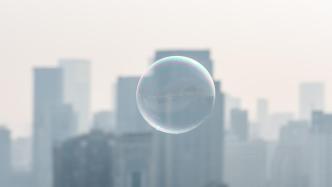
[Editor's Note] With funding from the Shanghai Science and Technology Commission (Project No. 22DZ2304300), The Paper and World Science have conducted popular science reports on the achievements that have won national and Shanghai science and technology awards.
This report focuses on the second prize of the 2022 Shanghai Science and Technology Progress Award "Research and Large-Scale Application of Key Technologies for Building Indoor Air Pollution Control" project, which is sponsored by Shanghai Jianke Group Co., Ltd. (hereinafter referred to as Shanghai Jianke) Obtained in conjunction with Tongji University, Shanghai Academy of Environmental Sciences, Shanghai Jianke Inspection Co., Ltd., and Qingdao Haier Smart Kitchen Appliances Co., Ltd.

The "Research and Large-Scale Application of Key Technologies for Building Indoor Air Pollution Control" project won the second prize of Shanghai Science and Technology Progress Award.
"The human body's daily air intake is about 15kg, accounting for more than 75% of the total intake, and more than 87% of the time is spent indoors. Breathing healthy indoor air has become a basic demand of people's lives."
When talking about the importance of controlling indoor air pollution, Professor Li Jingguang, chief expert of the "Building Indoor Healthy Environment" expert studio of Shanghai Jianke Group Co., Ltd. and chief engineer of Shanghai Jianke Environmental Technology Co., Ltd., cited the above data.
However, indoor air quality may not be effectively guaranteed.
The international academic journal "Science" published a paper pointing out that although car exhaust is regarded as the "culprit" of VOCs (volatile organic compounds), a wide range of household products - including paints, printing inks, cleaning products, Fragrance, nail polish, hair spray, etc. - the current VOCs emissions are not inferior to the VOCs emissions from car exhaust in American cities.
In addition to VOCs pollution caused by decoration, typical indoor air pollution also includes oil smoke pollution caused by cooking and PM (particulate matter) pollution caused by atmospheric haze. They also pose a real health threat.
The "Research on Key Technologies for Building Indoor Air Pollution Control and Series of Large-scale Application Research" project led by Li Jingguang focuses on these three typical types of indoor air pollution and has made breakthroughs around pollutant evaluation methods, purification equipment efficiency and indoor air quality design standards. Progress.
The project team developed a domestic ultra-clean large-scale indoor air quality test cabin, improved the flexible independent adjustable small indoor air quality test cabin system and a high-stability purification component test system, and created a "release rate" based on the data provided by the test cabin. The oriented VOCs source assessment technology system for building materials, furniture, etc. has greatly improved the accuracy of pollution source release rate testing.
In addition, the project team also invented a number of high-efficiency indoor air purification equipment and systems, achieving independent control of temperature and pollutant concentration, and built indoor air pollution system prevention and control technology, realizing the transition from "acceptance + operation" to "design + acceptance" + Operation” changes in the engineering construction system.

Photos of some members of the project team.
As an engineering project with important application value, the team's results have been applied to many landmarks such as the Shanghai Center. In actual engineering construction, teams often participate in the entire process of "index setting, material testing, process tracking, and project acceptance."
"Take the 13th Five-Year Science and Technology Demonstration Project as an example. We hope to reduce pollutants by 50% based on existing standards. For example, the acceptance standard for formaldehyde is 0.08 mg/cubic meter, then we must achieve 0.04 mg/cubic meter. Correspondingly, what is the amount of ventilation? And, based on the ventilation requirements, what is the release rate of the panels? Likewise, what is the release rate of the paint? How much lower should it be? These are performance indicators that must be determined at the design end. After the design is completed, we will test the purchased materials and track them during the construction period to ensure that the use of process methods meets the requirements. After the project is completed, check whether it meets the control objectives," Li Jingguang explained.
Innovate methods and equipment to control indoor air pollution from the source
To control indoor air pollution from the source, we must first scientifically measure the indoor air pollution caused by building materials and furniture. Overcoming the shortcomings of existing measurement methods has become the first problem the project team needs to solve.
"During the period from 2001 to 2016, China's main building materials and furniture were mainly evaluated based on 'content' as the control target. Merely testing the content of harmful substances in building materials cannot objectively reflect the speed and amount of pollution released into the room air. It is subject to great constraints in practical engineering applications," Li Jingguang said frankly.
In order to more scientifically reflect the actual release of pollutants from building materials, the project team changed the focus from "content" to "release rate". The "release rate" test uses an environmental testing chamber to detect the rate of pollutants released by building materials and can characterize Time-dependent release characteristics.
As shown in the figure below, through the release rate test, technicians can obtain the pollutant release intensity of building materials that changes over time. On the one hand, the health performance of the material can be more scientifically evaluated, and on the other hand, the concentration of air pollutants in the room can be estimated based on the release pattern. This will provide more scientific guidance on indoor air quality design and decoration material selection in practical engineering applications.
However, the release rate testing method has extremely high requirements on the test environment. In addition to maintaining constant temperature and humidity, the test chamber must also ensure a high and clean background concentration. This also means that the operation of the test chamber cannot be separated from powerful air treatment. equipment. At that time, the mainstream method abroad was to use a test cabin with a set of air treatment equipment, which inevitably resulted in high usage costs. In order to solve this problem, the project team used unified central processing equipment to supply multiple test chambers at the same time, thereby significantly reducing the cost of air treatment and promoting the application and promotion of release rate evaluation methods.
Measuring the pollutant release efficiency of a single building material can be completed in a small test chamber. However, general indoor scenes are usually composed of different building materials. How to simulate the pollutant release efficiency in actual indoor spaces has become a new problem that needs to be solved. In this regard, Li Jingguang, chief engineer of Shanghai Jianke Environment, decided to develop a high-performance, full-scale large-scale indoor air quality test chamber to simulate the superposition of multiple pollutant release sources. After repeated trials from material selection to manufacturing process, it has successfully filled the gap in the field of large-scale testing equipment in my country and supported the formulation of a series of standards such as the "Test Method for Formaldehyde and Volatile Organic Compound Release Rates of Wood Products - Large Test Chamber Method".
According to project member Li Min (sound mín) Wen, director of the R&D Center of Shanghai Jianke Environmental Technology Co., Ltd., "Large test chambers were not widely used at that time, and key technologies were mainly controlled by foreign countries, such as heat and humidity adjustment and ventilation volume control. We can’t learn it all, so we can only try it ourselves. In order to install a large test chamber, we even knocked down a wall of the laboratory building.”

Indoor air quality testing chamber.
More efficient ventilation, balancing pollution treatment and heat and humidity regulation
"Why do we need ventilation? There are two main reasons. One is to take away indoor pollutants, and the other is to regulate indoor heat and humidity. However, the air volume requirements for treating pollutants and regulating heat and humidity are different, and we often face The air volume that dilutes the pollutants is not enough to complete the heat and humidity adjustment, or the heat and humidity adjustment requirements have already been met, but it causes a dilemma of energy waste," Li Jingguang said frankly.
In order to achieve independent control of air temperature, humidity and pollutant concentration, the team developed a low operating resistance ventilation, air conditioning and purification system, optimized the structural form and multi-parameter dynamic control strategy, and solved the problem of traditional system temperature, pollutant concentration and energy consumption that cannot be taken into consideration at the same time. and other difficult problems, the indoor PM and thermal environment concentration reached the standard at all times, the ventilation energy consumption was reduced by nearly 50%, and the ventilation efficiency was significantly improved.
But in the field of personal consumption, products with similar functions are currently rare on the market. For example, fresh air fans of brands such as "Youshu" implement strategies that take into account multi-factor control such as human comfort perception and energy consumption, which coincides with the research and development philosophy of the aforementioned project team.
In addition, in order to solve the oil fume pollution caused by cooking, the project team redefined the range hood capture rate and proposed a quantitative evaluation method for Chinese cooking oil fume emission, which increased the kitchen oil fume capture rate by nearly 10% and reduced the kitchen oil fume pollution concentration. It promotes the widespread application of air purification treatment technology in civil buildings.

Window fresh air fans for home use
"Design" first to create new standards for pollution control
"The current main standards for indoor air pollution control include the mandatory standards GB 55016-2021 "General Specifications for the Building Environment" issued by the Ministry of Housing and Urban-Rural Development for the construction and completion acceptance stages, and GB 50325-2020 "Indoor Environmental Pollution Control for Civil Construction Projects" Standard", as well as the recommended standard GB/T 18883-2022 "Indoor Air Quality Standard" proposed by the National Health Commission for the building operation stage. The existing standards for indoor environmental pollution control in buildings mainly focus on the building operation and acceptance stage. The important link of "design" is missing. "In view of the existing domestic indoor air pollution control standards, Li Jingguang analyzed that it is necessary to increase the specifications of the "design" link.
To this end, the project team developed a set of "source-release-environmental concentration" calculation methods, established a building indoor air quality control design method, and compiled China's first public building indoor air quality control design standard JGJ/T 461-2019 " "Design Standard for Indoor Air Quality Control in Public Buildings" has achieved a breakthrough from qualitative to quantitative, supported the formulation of "Healthy Building Evaluation Standard" T/ASC02, and was directly cited by "Green Building Evaluation Standard" GB/T 50378-2019 and other standards. This has enabled the transformation of the engineering control technology system from "acceptance + operation" to "design + acceptance + operation" and promoted the high-quality and large-scale development of China's buildings in a healthy direction.
In order to achieve the overall goal of achieving a healthy indoor environment in buildings and promoting the scientific development of healthy buildings and green buildings in my country, the project team has deployed future plans from four levels:
1. In terms of scientific understanding, focus on the development of "typical indoor air pollutants" to "new indoor air pollutants" faced by our country at this stage, such as nitrogen dioxide pollution caused by the extensive use of wall-mounted gas stoves in Shanghai, and SVOCs (semi-volatile organic compounds) pollution.
2. In terms of engineering technology, focus on research and construction of a "sensing, knowing, and controlling" technical system for indoor air pollution in buildings to present indoor air pollution that cannot be caught, touched, and invisible in an easy-to-perceive manner, so as to further analyze and control; realize the transformation of building environment control from "environmental pollution control" to "personnel exposure control", that is, change from the amount of pollution released by pollution sources to the amount of pollution absorbed by personnel, and implement the core concept of "people-oriented".
3. In terms of promotion and application of industry management improvement, carry out demonstration and pilot project construction, and research and compile key standards for indoor air quality;
4. In terms of team building, continue to increase investment in research and application in this field, produce better and more research results, and contribute to Shanghai's construction of an outstanding global city.